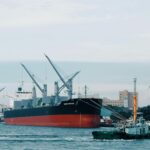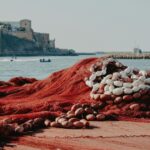Greetings, ocean enthusiasts! As we embark on a voyage through the depths, we find ourselves immersed in a less-discussed but critical topic —marine noise pollution. In this aquatic odyssey, we’ll dive into the world of underwater sounds and unravel the profound effects of ship-generated
Located between Kazakhstan and Uzbekistan, the Aral Sea is an endorheic lake that was once the fourth largest lake in the world covering an area of over 68,000 square kilometres and containing 10 grams of salt per liter.
The third largest river in the world and the most sacred river in Hinduism has now become one of the filthiest. After all, this is where 400 million people living near it dump their waste.
The last 30 years has seen the death of 50% of the world’s coral reefs and up to 90% may die in the next century including 29 reefs with World Heritage sites.
None of us were prepared for what climate change would bring to the world. More than 7,000 years ago, the last ice age ended abruptly signaling the beginning of the modern climate era.
This effort is in line with the country’s goal to reduce litter, which can be dangerous to marine life since garbage and other plastic materials may be mistaken for food.
Some common questions about the use of algae as an alternative biofuel source.
With forests being replaced by buildings and housing projects, carbon dioxide concentrations have also increased rapidly over the years. These have resulted to different incidents including a decrease in the ocean’s pH units.
Overfishing has been a growing problem around the world for years now and it happens when too much fish is caught at once that it’s hard for the breeding population to replenish its stocks.
A combination of both light and nutrients are essential for phytoplankton to sustain their growth. Without the supply of nutrients from the lower layers of the ocean, phytoplankton cannot photosynthesise and maintain their biomass in the sun-lit upper layers of the ocean.






















